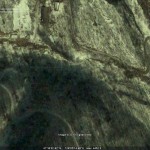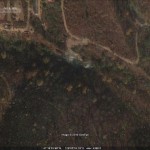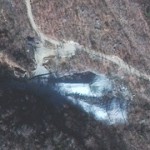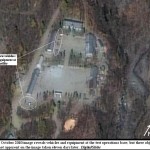Nowadays, there are between 20,000 and 30,000 North Koreans hiding in China, and roughly three quarters of them are women.
But what are they doing there? Of course, the major motivation behind their decision to flee was the disastrous economic situation in North Korea.
In the late 1990s, the refugees fled a very real threat of starving to death, while nowadays it is most likely that destitution and malnutrition drive them across the border. For men it is not so easy to move, since for them the stakes are higher. If caught, men are likely to face greater problems than women.
But there is another reason: large-scale trafficking of women (well, as will be explained later, the present author is somewhat wary about using the word “trafficking” to describe this phenomena).
Once a North Korean woman finds herself in China, she soon realizes that without ability to speak at least some Chinese, and with police constantly on alert against refugees, one of the best survival strategies available for her is to become a “live-in” partner of some local Chinese man.
The patterns differ greatly. In some cases, women are kidnapped or lured by false promises and then sold to Chinese husbands who might be very abusive and cruel. In some other cases, women make their own choice, often after spending years in China and acquiring a good command of the language as well as a good understanding of the situation.
The first is human trafficking, pure and simple. The second can hardly be described as anything but a normal marriage. But it seems that most cases lie somewhere between these two extremes.
When the border controls nearly collapsed in 1998-99, cross-border match-making services began to develop. The brides are in great demand in the poorer rural parts of northeast China. Similar problems are well-known in the South Korean countryside, too.
Single men cannot find wives since most girls go to cities and few of them would consider a farmer as a suitable husband anyway.
In the case of South Korea such a phenomenon recently produced an explosive growth in the number of the interracial marriages, with Korean farmers marrying Vietnamese and Chinese girls. In the case of China, the illegal migrants from the North are a substitute.
In some cases, a desperate bachelor pays mobsters or their intermediaries to get a wife whom he might eventually keep under house arrest, for fear that the kidnapped woman might escape.
However, more frequently families use the intricate network of inter-border connections to arrange a bride. Often the prospective wife is located on the other side of the border, but it is not a major obstacle as long as people have some cash to pay North Korean border guards.
Thus, many young Korean women enter the game willingly, even if their expectations about their future might be overly optimistic as they are often misled.
Frankly, I have serious problems with describing this particular type of arrangement as “human trafficking.” Our modern sensitivities might indeed be offended by an idea of a woman marrying somebody whom she has never seen, purely on assumption this is the surest way to guarantee her livelihood.
However, this is how nearly all marriages were concluded a century ago. The idea of romantic love union based on the mutual attraction is a novelty, invented in the 19th century Europe and still unusual in poorer parts of the world.
After all, many women get what they want: a stable life, free from hunger. They would never have such a life “under the fatherly care of the Dear Leader.”
However, these women are illegal immigrants and they have no way to protect themselves if the relationship turns abusive. If they escape, they are very likely to be caught by mobsters and sold again, or caught by police and extradited back to their home country (god knows what is worse).
However, it is also important and telling that a large number of such women, if they are indeed deported to the North to spend some time in jail there, use the first opportunity to come back to China in order to reunite with their husbands again.
Still, the North Korean authorities make sure that all women who are caught pregnant have abortions: perhaps, on the grounds of habitual racism, so common in the Kim Jong-il’s kingdom.
Many Chinese husbands try hard to do something about their Korean wives’ official standing. If the husbands are willing to contribute enough resources, sooner or later, the women acquire Chinese Resident Identity Card where they are registered as China-born ethnic Koreans.
Such an ID costs a lot in bribes to officials, but once it is secured the former hapless refugee becomes a proud citizen of the People’s Republic of China.
It is also important that children born out of such unions usually get the Chinese Resident Identity Card as well. This means that they will go to the Chinese schools and receive a standard education in Korean and/or Chinese.
However, apart from this cross-border movement of brides there is trafficking pure and simple. The Chinese sex industry is controlled and restricted, but exists, and North Korean girls form a large part of the sex workers in the cities of northeast China.
They are even more hapless than Chinese prostitutes, since they are probably more afraid of deportation than of their captors. But their sorry fate should probably become a topic of another story …




